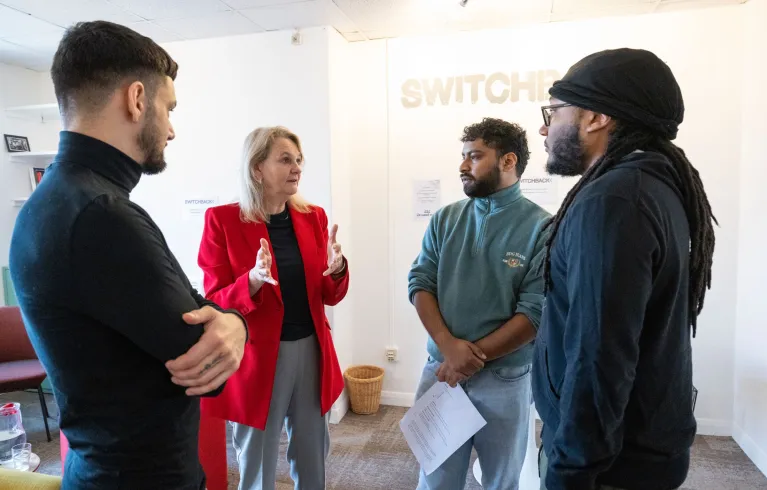
Key information
Publication type: General
Contents
4 sections
The research
London’s Violence Unit (VRU) commissioned Crest Advisory to carry out a pan-London Strategic Needs Assessment (SNA) of serious violence in London.
The report draws on information and intelligence across partner organisations, conducting a thematic analysis of the first iteration of 32 Local Authority level Strategic Needs Assessments, delivered in line with the Serious Violence Duty.
Research phases
The research was broken into distinct phases, with key outputs including:
- A quantitative profile of serious in violence in London.
- An SNA Review document to facilitate standardisation across London in line with the Serious Violence Duty.
- A What Works Index for evidence around violence reduction with external links, aligned to the VRU Evidence Hub.
- Final report pulling together key insights from above and strategic roundtables, bringing together key stakeholders across the sector (including the VCS, young people, local authorities, delivery partners) to review the findings and develop recommendations.
London VRU’s definition of serious violence covers violence affecting children and young people under the age of 25, domestic abuse and sexual violence. There is no nationwide definition of serious violence; the Duty allows local areas to develop their own definition - a common definition for London was agreed upon by the VRU and duty partners in 2022.
Please refer to the main report for a full breakdown on data sources and comparison periods.
Key findings
Understanding violence
- Serious violence continues to be heavily geographically concentrated, mostly in areas of high deprivation. Tourism and the night-time economy, and areas associated with higher footfall, are also likely to drive up levels of violence, particularly personal robbery and sexual offences.
- Whilst the majority of suspects of violence and exploitation continue to be male, the proportion of female suspects has increased since 2019. There is emerging evidence to suggest that suspects may be getting younger, with an increase in the proportion of 10 to 14-year-olds suspected of violent offending over the last five years; however, this must be investigated further.
- There is a clear disproportionality in the way in which Londoners are affected by serious violence, with Black Londoners overrepresented as both victims and suspects.
- Beyond the scale of serious violence, the vulnerability of people and communities to violence continues to present a challenge. However, there have been some positive developments over the last five years, including the number of young people with access to positive opportunities and the consistently decreasing proportion of 16 and 17-year-olds not in education, employment or training (NEET).
- Deprivation and the cost-of-living have put particular pressure on communities in London. Deprivation is a well-known risk factor for violence, with a higher incidence of youth homicides in London noted in more deprived areas. Mental health and special educational needs continue to be an ongoing concern for stakeholders in London, both in terms of their relationship with those affected by violence and the ability of partners to respond appropriately.
- Understanding violence and interpreting trends is challenging. Rates of police-recorded crimes are in part driven by improvements in recording and reporting by victims, as well as changes in definition. Trends run in contrast to the long-term downward trend of violence. Short-term fluctuations driven by the COVID-19 pandemic further complicate analysis.
The response
- Every day, serious violence affecting children and young people in London costs over £3.3 million. This economic and social cost includes that of police, criminal justice, health and victim services. Beyond these costs lie the devastating human consequences of this violence.
- In the face of challenges presented by serious violence and its causes, there has been a significant investment to respond, led by London’s VRU. However, there remains a disparity between the cost of violence and national government funding arrangements.
- Partners have frustrations with data sharing, particularly accessing crime data of sufficient granularity from the Metropolitan Police Service.
- Local authorities highlighted severe financial pressures, but saw long-term Public Health model and focus on early intervention as positive.
- There is reassurance in the approach being taken by the VRU to commission and evaluate interventions and in the capacity-building support for the wider sector. The VRU’s role in working with partners to ensure activities are evidence-driven will continue to be pivotal.
- The VRU has played an important role as a convenor of partners from across local authorities, communities and young people, health, education and police, but there are areas where collaboration can go further. This includes how data is shared to better understand serious violence and how to respond.
Recommendations
The report makes a number of recommendations across areas, including:
Improving data quality and sharing processes
- VRU and partners to agree a framework for data requests.
- Consideration of alternative processes for future Pan-London Serious violence SNAs, produced collaboratively.
Commission research to address evidence gaps
- Links between housing and serious violence.
- Pathways to Violence Against Women and Girls (VAWG) perpetration.
- Disproportionality as a cross-cutting theme.
- Online harms, including exposure through the use of social media.
Consider gaps in commissioned services
- Specialist interventions for groups disproportionately at risk of violence.
- Focussed deterrence programmes, multisystemic therapy for CYP, and bystander programmes all identified as gaps.
Continue to develop evidence base on 'What Works'
- Ensure mainstreaming of successful interventions for sustainability.
- Share learning and best practice nationally.
- Ensure the inclusion of Cost Benefit Analysis where appropriate.
Support effective governance
- Further utilise the VRU’s convening role to strengthen and expand the partnership.
- Consider expanding partnership to include stakeholders from the transport sector and the night-time economy.
- Wider Duty partners to review roles and responsibilities for clarity and avoidance of duplication.
Strategic review
- Consider refining definition of Serious Violence in collaboration with partners.
Related documents
Serious Violence in London report